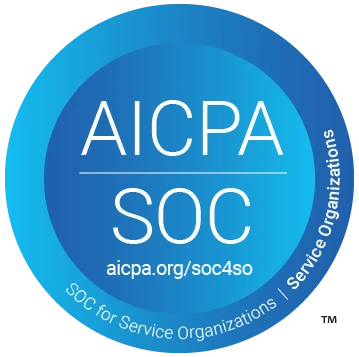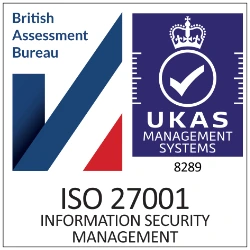
The role of PIK instruments and other hybrid debt/equity in financing structures

A good time to be P-I-K-y?
The role of PIK instruments and other hybrid debt/equity in financing structures
By Juliette Challenger, Arunima Misra and Natasha Chan, GLAS
In the wake of some notable high profile failures of PIK notes in debt restructurings following the financial crisis, arrangements combining a variety of debt and equity-like characteristics have been re-emerging with a variety of features which make these more attractive to companies and investors alike. This article focuses on the increasing trend for innovative uses of PIK notes in such financing arrangements.
Introduction
The popularity of PIK (“payment in kind”) debt, which peaked in the high risk appetite era just prior to the 2008 financial crisis, has seen a resurgence in recent years, incorporating a variety of characteristics and features designed to attract investors. Given the abundance of capital and low interest rates, a number of “hybrid” investments, which fall between pure debt and pure equity, are a popular feature in complex restructurings, enabling companies and investors alike to take a more cautious approach to PIK debt, while providing incentives and potential significant advantages. These instruments offer much needed liquidity for companies, whilst protecting downside risk with equity upside potential for investors.
Preferred equity shares (being a class of equity which ranks ahead of ordinary shareholders in an insolvency), convertible debt instruments (where loans or bonds can be converted into a specified portion of equity), and PIK debt (where interest payments are deferred and capitalised in accordance with certain terms), have been an increasing feature of recent deals for investors looking for ways to deploy capital and generate attractive returns, and deals structured with instruments of this nature will continue to develop and build confidence in such arrangements.
Features of PIK financings
PIK debt typically refers to a loan or bond where all or some of the accrued interest is capitalised throughout the life of the debt instrument. Deferred payment of cash is compensated by a higher rate of return than for senior debt. The PIK loan or bond will typically be issued by the holding company of the parent of the corporate group receiving senior debt, with the PIK debt ranking behind the senior secured bank debt issued to the company, but ahead of equity investors. PIK financings can be structured in many ways, but typically have the following features:
Interest – can be fixed or floating instruments comprising:
- “True” PIK – all interest is capitalised and added to the principal of the loan.
- Pay if you can – interest is paid to the extent that certain financial tests are met; where these are not met, the interest is capitalised and added to the principal of the loan.
- PIK toggle/ pay if you want – the company/ issuer can decide whether to pay interest in cash, in kind (i.e. with the issue of further bonds or loan notes) or in a combination of the two.
PIK loans
- These are particularly helpful if a company has liquidity problems, as they enable the company to pay interest without paying it in cash form. This is attractive to companies that want to avoid making immediate cash outlays for debt interest.
- Are privately held and not publicly tradeable on an exchange, and generally unsecured.
PIK notes
- These are debt instruments with fixed terms and call protection, and many equity-like features (e.g. observer rights and carry tag along rights on exit).
- They are generally unsecured and are structurally subordinated in the debt capital structure. Where security is granted, it will typically be limited to a pledge over shares in the issuer, or a form of guarantee from the direct holding company.
- Can be privately held (particularly where stapled or semi-stapled to equity) or publicly traded on Stock Exchanges and through the Clearing Systems (often when part of a wider debt package), which ensures ease of transferability.
- May have a slightly longer tenor than senior term debt.
Covenants tend to follow those in the senior debt documents, but will often be looser, and will typically include:
- An anti-layering covenant to ensure that the PIK debt remains the only tranche of junior capital in the structure in order to maintain the priority of the PIK holders above shareholders in respect of the senior debt, due to the structural subordination arrangements;
- Additional rights to be involved in future capital raising or restructurings;
- Rights to limit any increases in the size of the senior debt, and any waivers or consents that could adversely impact the PIK noteholders; and/or
- The ability to appoint an observer to attend board meetings, and certain other governance rights, e.g. controlling the extent to which dividends or other distributions or certain payments can be paid to shareholders, in order to minimise or prevent cash leakage from the business.
Why and when used?
PIK instruments are attractive to companies preferring not to make cash outlays. This affords the company greater flexibility to conserve cash for specified events or actions or to weather downturns in the business cycle by choosing to compound interest or determine when cash interest is paid. In most cases, PIK instruments comprise a fraction of a company’s total outstanding debts and are structured so they mature later than the company’s other debts. This allows the company to focus on repaying its traditional debt, and provides a form of “mezzanine” debt, without impacting on the company’s balance sheet.
PIK instruments can also be used as an incentive for creditors to vote in favour of a restructuring or lock up to support a restructuring at an early stage, with noteholders allocated PIK bonds/ notes as an entitlement post-restructuring.
PIK instruments are often stapled/semi-stapled with other debt or shares in a new holdco structure, meaning that they will need to be held/ transferred together. This can be seen as an incentive for investors who wish to receive an upside to the senior notes.
In addition, PIK instruments can have additional restrictions/ obligations placed on their transfer including the loss of rights to receive further payments of cash or PIK interest, and other governance rights.
PIK pros
Some notable advantages of PIK instruments are:
- High rates of interest – the capitalisation mechanic results in a substantial increase to the principal amount of each holder, and potential for significantly higher returns on investment than senior debt.
- May be used as an incentive to holders to agree other material changes to a company’s debt which affect creditors and investors.
- Offers companies increased liquidity without diluting ownership.
- Can include certain controls relating to distributions to shareholders and certain limitations on senior debt.
- Enables the company to receive more investment without overleveraging and deferring outgoings, therefore in many cases enabling and promoting growth.
Potential PIK pitfalls
- PIK debt is inherently riskier as it typically ranks behind other senior debt and is frequently structurally or contractually subordinated.
- PIK debt also requires lenders to assume additional credit risk from a borrower because the amount of the principal owed will grow over time, and PIK holders will only make a recovery to the extent that there is any surplus cash once the senior debt has been repaid.
- Whilst attracting certain governance rights, PIK instruments carry limited rights on an insolvency or breach of covenant, and limited influence on how the underlying business is operated, or how restructuring discussions progress. Additionally, any enforcement steps may be of limited practical value, especially where value of the operating group breaks in the senior debt.
- An inherent risk for a company is that its PIK liabilities may become unsustainable, resulting in an inability to repay at maturity. A prominent example of this was the failure of retail fashion brand Peacocks, which issued PIK notes at 17.2% per annum, leading to a significant PIK liability. By the time of its administration in 2012, over half (£400m) of its £750m total debt was attributable to PIK liabilities, which contributed to its demise.
The practicalities of PIK instruments
There are several practical considerations when dealing with PIK debt instruments, which will be dependent on, amongst other things, the specific transaction, the type of PIK selected, and the ability of the instrument to be cleared in the Clearing Systems. Where PIK instruments are not held within the Clearing Systems (and therefore not assigned a related ISIN code), they will be recorded on a register, which is held with a note registrar, such as GLAS. As these are entries in a register, holders will not get position statements but can approach the PIK registrar to confirm their position.
For registered PIK notes, Bloomberg also can assign a Unique Identifier so that holders/custodians can keep a record in their systems. Trading of PIK notes involves completion of transfer certificates which need to be signed by both transferor and transferee.
Share transfer certificates (and arrangements for delivery of original documents), will need to be completed simultaneously if the instruments are stapled, together with any debt transfer certificates, where relevant. Typically, the purchase price of the PIK notes will move directly between holders in this instance, and not via the Clearing Systems or the agent on the PIK notes, such as GLAS.
Where PIK notes are stapled to shares in the structure, there is often a separate share registrar, or company secretary, who is in charge of updating the share register. Holders will need to liaise with both the PIK notes registrar and the share registrar in respect of their particular holdings.
Tax considerations will also be relevant in determining the form that a PIK instrument takes, and whether or not this will be privately held, or issued through the Clearing Systems, and/or issued on a stock exchange.
PIK in practice – HEMA Group
As a global independent provider of debt administration services, GLAS frequently works on complex debt restructuring deals involving a PIK debt element, and other hybrid instruments. The recent HEMA Group restructuring, which was implemented via an English scheme of arrangement combined with a Dutch share pledge enforcement, was one such deal involving PIK notes in the debt structure.
HEMA Group (“HEMA”), one of the largest and highly renowned Dutch retailers, had unsustainable indebtedness and had fallen into financial difficulties, compounded by the COVID-19 pandemic. HEMA restructured its indebtedness of €750m debt (including bond debt with a face value of €600 million) via a partial debt to equity swap, which halved its debt to €300m. The restructuring also saw the issuance of PIK notes by a new holding company within the Group (“Holdco”), and the improvement in its liquidity position by the issuance of an additional €42m of new bonds, secured private placement notes (to be held in the Clearing Systems) and listed PIK notes, which were quasi-stapled to the new equity issued, offered to scheme creditors.
The new Holdco PIK notes provided for cash and “payment-in kind” interest, were unsecured and structurally subordinated to the senior debt, held in dematerialised registered form, and listed on the International Stock Exchange. The Holdco PIK notes were quasi-stapled to the shares in the new Holdco with certain restrictions on receiving interest (in cash and further new PIK notes) and certain limitations on voting rights placed on holders of new PIK notes where such holder did not hold the corresponding amount of newco shares.
GLAS was mandated on a number of significant roles on the restructuring, including Note Trustee (across all series of existing and new notes), Security Agent, Facility Agent, Principal Paying Agent, Transfer Agent, Registrar, Information Agent, Lock-Up Agent, Tabulation Agent, PIK Notes Trustee, PIK Notes Paying Agent, PIK Notes Registrar and Transfer Agent, and Holding Period Trustee, and carried out various bondholder communications and liability management exercises that were integral to the transaction throughout the process over several months.
Conclusion
The current competitive post-COVID environment of both debt and equity investors with an increased appetite for higher degrees of risk looking to deploy cash reserves on one hand, and companies keen to secure additional liquidity without overleveraging or diluting ownership on the other, see circumstances ripe for PIK instruments and other types of “hybrid” investments to continue to increase in popularity as part of a wider debt package as demand for products offering a high yield increases.
It is anticipated that companies and issuers will continue to create ways to make use of PIK instruments and other debt/ equity hybrid instruments in order to attract investors, and that the features and structures of such “hybrid” investments will continue to evolve over time with further bespoke terms to afford even greater flexibility for market participants.
Contact GLAS
For more information about GLAS and our services, please contact:














